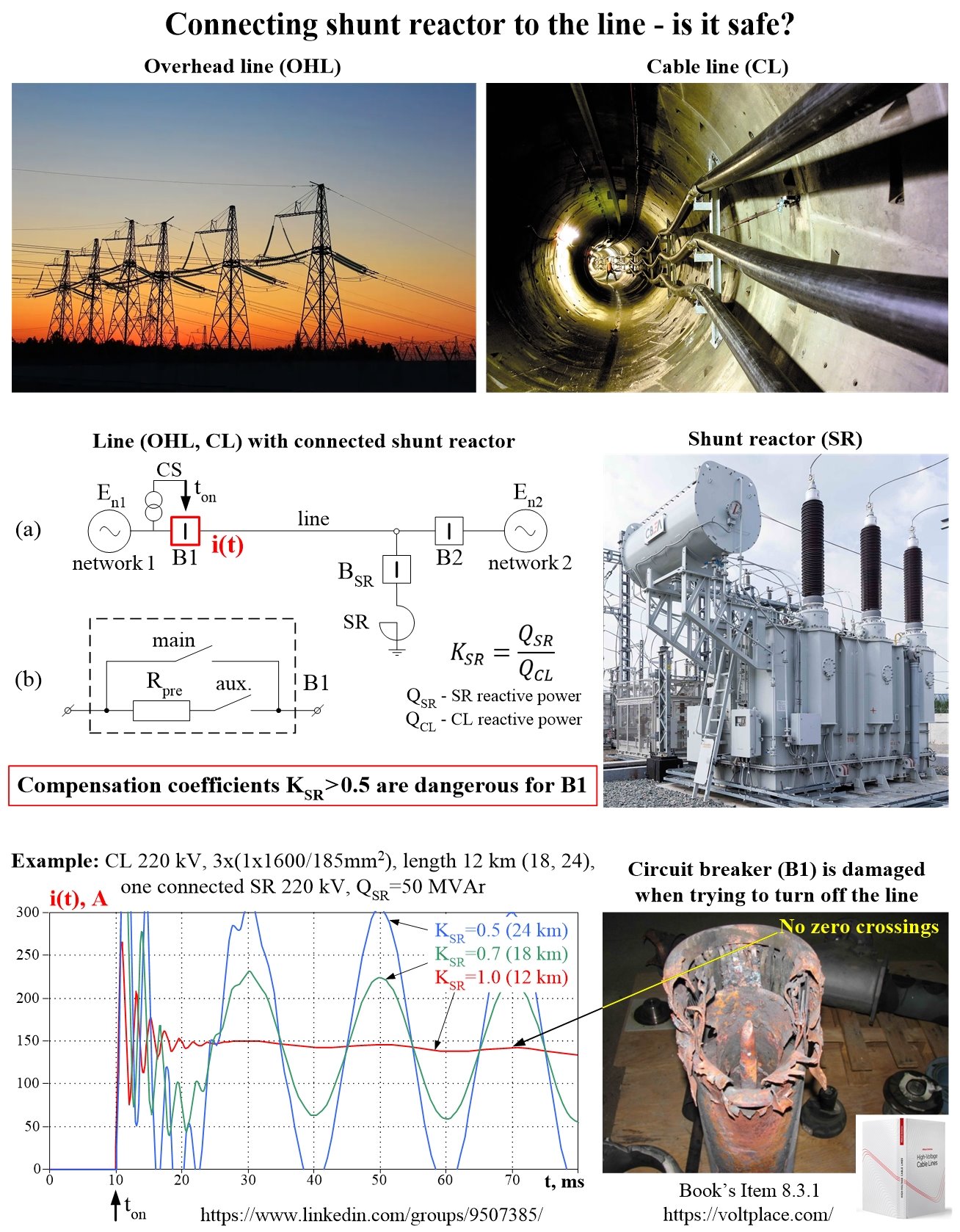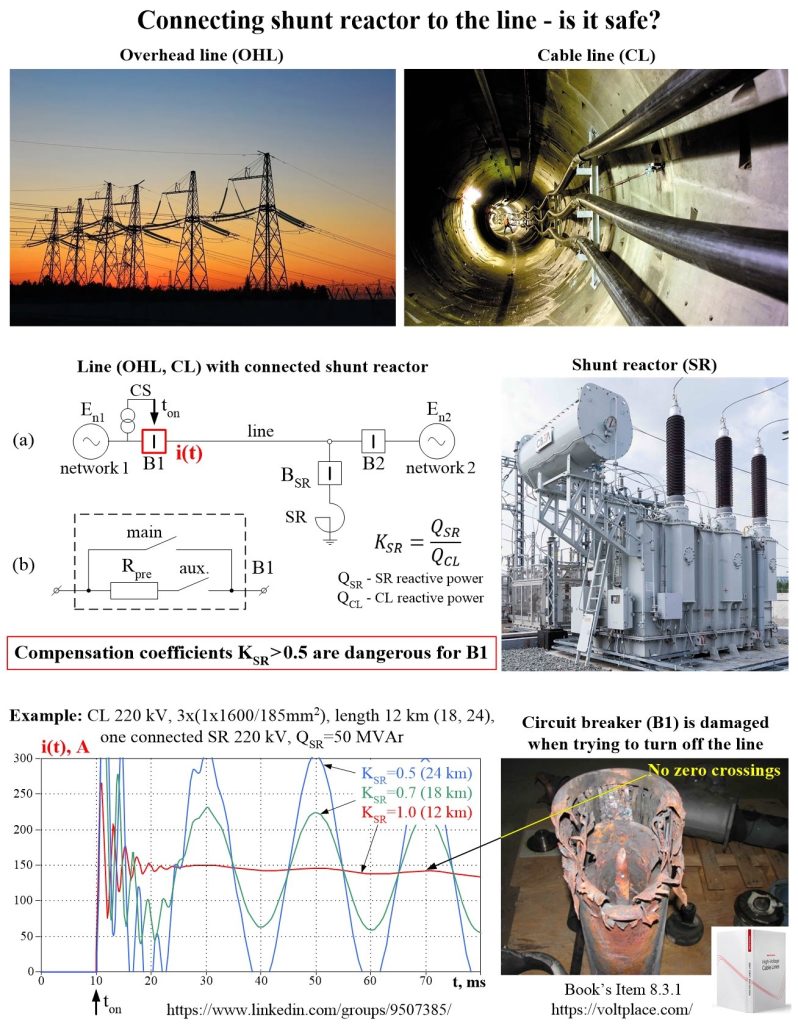
Cable line with shunt reactor
Usually, AC cable lines are up to 10 km long. However, in some cases the length can reach 50 km or even 100 km. In such cases, the cable line has a significant capacitance, which must be charged and discharged following the sine wave of the alternating voltage of the AC network. This alternating current is called charging current, and sometimes (for 110-500 kV lines up to 100 km long) it can reach 1000 A or even more, heating the cables themselves and creating problems for the adjacent network.
To solve the problem of charging current, it is sometimes necessary to install a shunt reactor (SR). With its inductance, reactor will consume the reactive power that the line generates with a capacitance – this removes the problem of the charging current of the line, as well as a number of other problems to which we will devote future posts.

The ratio of reactive power of shunt reactor and line is called the compensation coefficient Ksr. Usually, for long lines designers try to achieve full compensation, that is, Ksr =1. It turns out that this is not only “not required”, but it even can be harmful – first of all, the line circuit breaker (B1) suffers from this.
If the line has Ksr =1, then there is practically no alternating current in the B1, which supplies voltage to the line. And then the only component of the current in B1 will be the aperiodic component of the reactor current, which will gradually fade. If a quick shutdown is required after switching on the line (for example, due to protection tripping), then B1 will have to extinguish the DC arc without zero crossings, which will most likely lead to B1 damage (see oscillogram and B1 photo).
The following solutions are known to combat the problem:
1️⃣ Avoid solutions where Ksr >0.5 (connect the reactor not to the line, but to the busbars).
2️⃣ Make separate switching of the line and the reactor (first turn on the line, and only then connect the reactor using Bsr).
3️⃣ Controlled switching CS (turn on the line at the time that gives the minimum aperiodic component)
4️⃣ Pre-connected resistors Rpre (B1 auxiliary contacts are closed first, and only then the main ones).
Solution “2” is bad because, under certain circumstances, it may no longer be B1 that is damaged, but the Bsr (this happens if a short circuit occurs after switching on the line).
Solutions “3-4” are also bad, as they complicate B1 and increase its cost, and, worse, they are ineffective at Ksr >0.8.
Thus, the main effective measure is “1” – It is not necessary to connect the reactor to the line (by the way, it is usually difficult to connect any equipment to the cable line, unlike the overhead line), but it is better to give preference to connecting the reactor to the busbars.
These and many other issues of cable lines with shunt reactors are discussed in Part 8 of the book, including Item 8.3.1.
